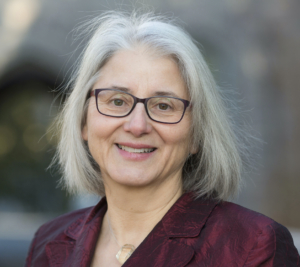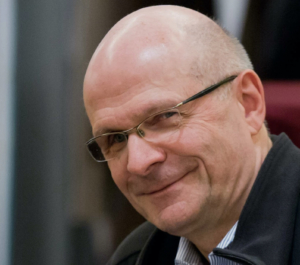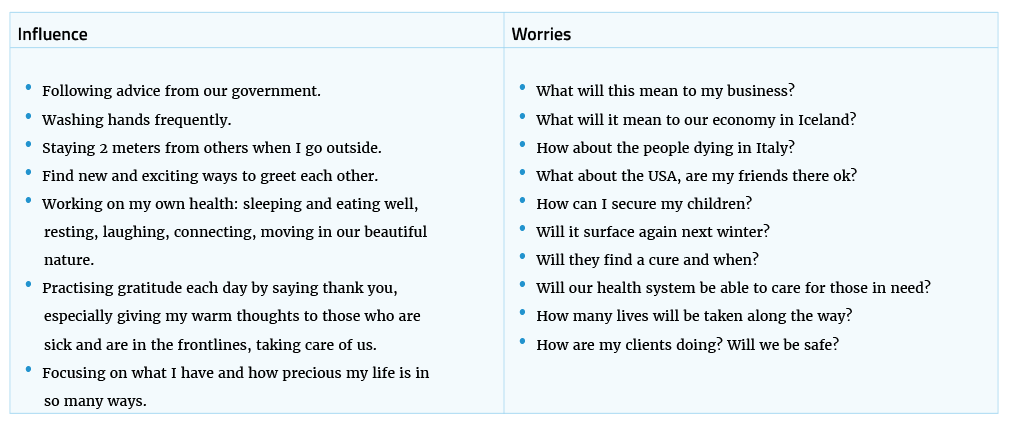In the August 2021 of AI Practitioner we have three enlightening articles for Voices from the Field, each one providing a unique window into Appreciative Inquiry. Faith Addicott presents the Constructionist principle as part of her ongoing series titled ‘Our Principles in Action: Appreciative Inquiry for Justice & Belonging’. We are then introduced to Vera A. Hofmann and her work, which considers the shifting narrative across business and society as it continues to move us toward a new paradigm. The third article, by Jan Driesen, examines four key factors that impact the successful application of AI throughout the organisational change process. It is my pleasure to present all three authors to our AI Practitioner readership.
Four Factors to Use Appreciative Inquiry During Organisational Change Processes Successfully
Jan Driesen works as Operations Manager for Knaek Promotions in Belgium where he is responsible for all commercial and promotional activities together with his team of Belgian city managers. He holds a bachelor’s degree in Marketing. Jan is an experienced trainer in hospitality, coaching, leadership and management
Have you ever wondered what makes an AI process successful? I did, which is why the main question of my master’s thesis for the Master of Management program at the Hasselt University in Belgium was: “How can Appreciative Inquiry be successfully used to facilitate organisational change from the perspective of the change facilitator”’. A literature study provided me with the proper insights and curiosity to pursue a more pragmatic approach. I held ten in-depth interviews with seasoned AI practitioners that provided me with an abundance of knowledge to construct the conclusion to be read in my paper. I found that the success of an AI process depends on four factors:
Your influence on the process as a facilitating AI practitioner.
The influence of the participating organisation on the process.
The connection, trust and involvement between all parties.
The architecture of the process.
In my interviews, I focused on the role and perspectives of the interviewees as an AI facilitator.
Personality layers of an AI Practitioner
As the facilitator always brings her/himself into the process, her/his influence comes in various shapes, referring to personal elements that reflect into the several phases and parts of an AI process. Inspired by Korthagen’s (2014) “onion model”, I grouped my research findings into several personality layers for a successful AI facilitator. Fundamental to the onion model is the notion that several layers play a role within a person’s being which influences their behaviour. By changing the original order of the layers, I was able to reflect more accurately the influence of these layers on the AI practitioner.
The layers of the model are:
- Core qualities
- Mission
- Beliefs
- Attitude
- Role
- Competencies and
- Environment.
At your very centre, you find the (1) core qualities that reveal what you are made of. Everyone has strengths and weaknesses, and everyone has their qualities. However, successful AI practitioners tend to have a natural tendency to connect (with) people and sense what a process and its participants need at any given moment. These core qualities are the foundation for a strong (2) mission. As an AI practitioner, your mission, your reason to work from an AI stance is about moving forward together. It is about feeling energized and empowered, about seeing new opportunities, even if things don’t go well. It is about helping each other learn and develop, becoming stronger and better at what you do. The pivotal difference is in the way it happens. Whereas traditional goal-oriented approaches might end in similar results, Appreciative Inquiry does it in a way through which people grow closer to each other and their goals, a large part of sustaining the desired outcome. AI enables you to use your qualities as leverage for organisational change by giving you language and method. This is why you chose to work from Appreciative Inquiry, because it does make a difference.
It is said that you become what you believe. Successful AI practitioners believe that everyone has their individuality and should be true to their own (3) beliefs. However, as a successful AI practitioner, you have a strong belief in humankind, you are convinced that there is always something positive and that you should appreciate whatever comes up. The good, the bad, the uncertain – all of it. Even more important, the chances of an AI process wielding a successful outcome increases substantially when the process facilitator fundamentally agrees with and believes in the philosophy behind Appreciative Inquiry. As Cooperrider and Srivastva indicated many times in their first paper on AI (1987), the successful AI practitioner does not see AI as a tool or a method, but as a way of life. A successful AI practitioner embodies the AI philosophy to at least some extent, some more than others.
If your core qualities reveal what you are made of, your AI mission drives what you believe and your beliefs dictate how you behave, then how exactly should an AI practitioner behave? As a successful AI practitioner, your (4) attitude reflects that you are open-minded and without prejudice. You strive to live the AI philosophy by appreciating whatever comes up, you adopt a student mindset and are aware that you still have a lot to learn. You set the right example for others to follow by walking the talk. As the success of an AI process is not so much about what you do but how you do it, your attitude is not to be underestimated. Your attitude is what puts you in the right (5) role, the role of a guide who shows an alternative way to reach goals while increasing enthusiasm, trust, connection and organisational culture. You act as a coach who puts the power into the hands of the people and helps them create something of their own, giving them a feeling of ownership and accomplishment.
The last element within the control of the AI practitioner is the element of (6) competency, which is not that important to the process, contrary to what many believe. People are more than just their competencies, which can be learned by anyone and do not necessarily entail success. As a successful facilitator, you owe your success more to your mindset and attitude, explained above, than to your competence. However, it is advisable to understand the foundations of AI and know about the 4D, 5D or 5D+ cycle and the principles of AI, as this enables you to implement it more effectively and freely while becoming more aware of the process, which ultimately has a positive impact on the success of the process.
Lastly, the outer layer reflects on the (7) environment in which this reflection has taken place. In an AI personality framework, the environment consists of everything happening during the Appreciative Inquiry process.
Other success factors
- In my research, I paid attention to three other factors for successful AI processes besides the personality layers of an AI practitioner:
- The influence of the participating organisation.
- The quality of the connection between the parties involved.
- The overall architecture of the process.
Regardless of the impact you have on the process, regardless of the various aspects you have to consider, if the participating organisation does not allow it, the process never gets started. At the beginning of every process, it is crucial to get the leadership of the participating organisation on board with what is about to happen, as they set the culture that reigns within. The culture is what undergoes the true change, which makes preparing the leaders of that culture essential for the outcome. To facilitate true, lasting change, the organisation must want it: they must be open to participate, and willing to change. To a certain extent, they must be willing to adopt an AI attitude, especially during the process.
Secondly, for you and the participants to exercise your influence for the better of the process, a mutual connection is imperative. The interconnection between all the parties involved is the foundation upon which the process is built. This connection is constructed through genuine conversations about valuable stories and experiences. For these conversations to take place, the element of mutual trust is vital. The participants must feel like they can trust you and each other, just as you have to feel like you can trust the participants and, in some cases, your fellow facilitators. The element of trust goes even further, it is also about your confidence in your own being and abilities. Maybe even more important, it is about trusting the process. This interconnectedness and mutual trust result in involvement from all sides. Every person in the room feels part of the same reality that combines your individual perspectives and melts them to form a bigger picture of the ideal outcome.
Lastly, having a solid process architecture is a key success factor for facilitating AI-based organisational change. This architecture includes a design phase with preparation, the actual approach and facilitation of the process, and a follow-up protocol, which is crucial for the realisation of the ideas and dreams that have come out of the process. The AI process never really stops with a multi-stakeholder event like an AI summit. In some cases, the facilitation of the change process continues to run for months, or even longer. In others, the change engine is so fuelled right after the summit that self-managed change happens quickly.
Intro by Keith Storace
Keith is a registered psychologist with the Psychology Board of Australia (PsyBA) and associate fellow with the Australasian College of Health Service Management (ACHSM). He has designed and implemented health and wellbeing frameworks across the community, health and education sectors. Keith’s current focus is on developing his work in Appreciative Dialogue (ApDi) to assist individuals in moving from self-doubt to inspired positive action.







 Based in Germany, Gertraud Wegst is an AI practitioner and trainer, and a master coach with the mission of being a source of appreciation. An author and co-creator of the ‘Appreciators’ Traffic Light Model, Gertraud has been freelancing as a consultant and trainer since 1982, and from 2005 as a management coach. She is co-founder of Die Wertschaetzer (The Appreciators) with an AI process: eight coaches and AI practitioners.
Based in Germany, Gertraud Wegst is an AI practitioner and trainer, and a master coach with the mission of being a source of appreciation. An author and co-creator of the ‘Appreciators’ Traffic Light Model, Gertraud has been freelancing as a consultant and trainer since 1982, and from 2005 as a management coach. She is co-founder of Die Wertschaetzer (The Appreciators) with an AI process: eight coaches and AI practitioners.

